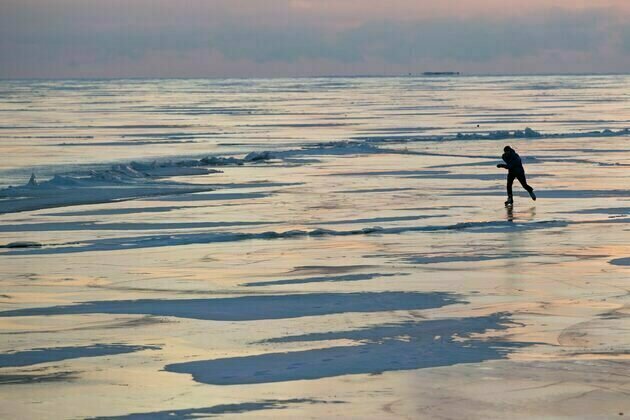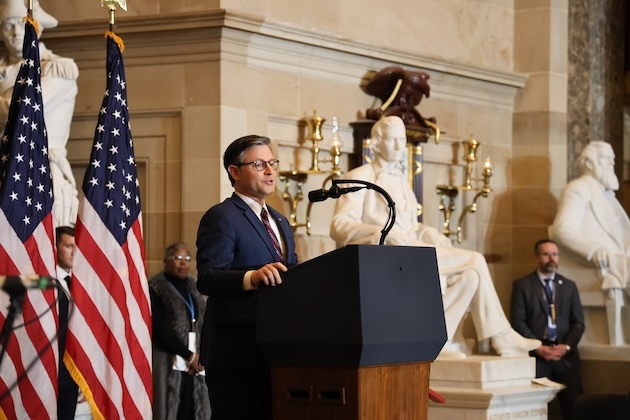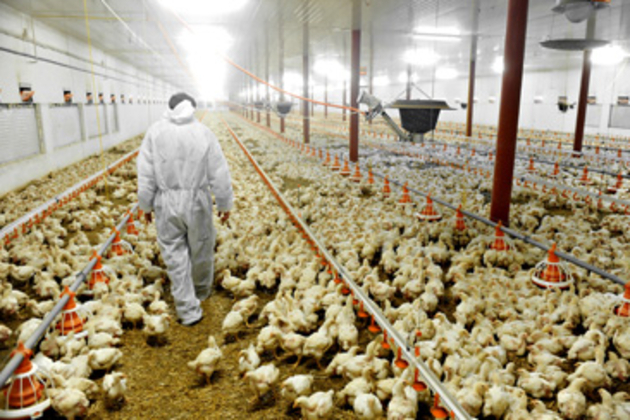Climate change is threatening Lake Ontario - lessons from the Little Ice Age show us why we need to adapt
The Conversation
19 Feb 2025, 12:52 GMT+10

Humans have always had a close connection with Lake Ontario. For centuries, this Great Lake has been a backbone of the region's economy - relied upon for trade, food and industry. But a warming climate could dramatically change this relationship.
This wouldn't be the first time climate change has affected how humans use this Great Lake, as I show in my new book The Lives of Lake Ontario: An Environmental History. During the Little Ice Age, which spanned roughly the 14th to 19th centuries, Indigenous and settler societies had to adapt to the cooling Lake Ontario environment.
As we again face a changing climate, the way our predecessors adapted during the Little Ice Age teaches us why it's necessary we change how we use and interact with Lake Ontario today.
Prior to the onset of the Little Ice Age, the Lake Ontario region was occupied exclusively by different Indigenous Peoples - including the Haudenosaunee and Anishinaabeg. These groups regularly came to Lake Ontario to hunt, harvest and trade. They were highly attuned to local climate conditions, adapting their agricultural strategies accordingly.
But the Little Ice Age altered the climate in the region - with average temperatures about 1-2C lower than normal. I argue in my book that the impact this period's climate had on the environment and those living in the region helped change the course of empires in North America - both Indigenous and Euro-American.
This cooler climate led to seasonal unpredictability. This forced the region's various occupants to adjust their resource and food acquisition strategies. A higher frequency of summer droughts could mean failed crops - while extremely heavy snows made it harder to hunt. These factors may have contributed to the severe decline of Indigenous populations in the region.
The origins of the fur trade - which dramatically reorganized society and altered political power in the Great Lakes region - are also at least partly attributable to the Little Ice Age. The cooler climate drove the desire for fur in Europe while also affecting the pelt thickness of North American animals.
The climate during the Little Ice Age also influenced various military campaigns due to its effects on the region's weather and the lake's conditions.
During the War of 1812, for instance, two American warships sank in a sudden summer squall north of Port Dalhousie. A lack of appreciation for the lake's capriciousness could mean disaster - while those commanders who respected the local environment had the upper hand.
But alongside the challenges this cooling climate created, it also provided new opportunities.
As I contend in my book, climate changes during the period encouraged the diversification of agriculture and food production - such as the cultivation of wheat strains hardy enough to survive cooler conditions. Settlers also believed the mass conversion of forests and wetlands to fields could modify the climate, making it warmer. The influx of settlers reliant on these new types of agriculture fundamentally shaped the emerging political and economic systems around Lake Ontario.
Heavier ice cover on Lake Ontario actually made winter transportation easier in some ways.
Temperatures during the Little Ice Age frequently caused a thick freeze in the lake's nearshore waters. This enabled alternative forms of wintertime travel which were generally cheaper, more flexible, and more dependable than travelling by boat. Skates, sleighs and iceboats were developed for both economic and recreational needs.
As the Little Ice Age began releasing its grip during the 19th century, Euro-Americans moved to the Lake Ontario basin in larger numbers. This climatic shift proved integral to settler expansion.
The Toronto region could not have become Canada's economic and cultural capital without the resources of Lake Ontario.
But all this economic and political growth has come at a tremendous cost. Lake Ontario is now imperilled because of the way we've come to rely on it.
In the 19th century, we cut down forests, dammed and polluted tributaries, dug canals and obliterated fish species in the region.
In the 20th century, our impacts only expanded: overwhelming pollution, invasive species, urban sprawl, larger canals and hydroelectric dams. These human costs have led to nutrient overloads in the water from wastewater and farming runoff, impoverished biodiversity, fluctuating water levels, toxic chemicals and plastics in the lake.
This ongoing degradation - coupled with climate change exacerbating ecological challenges and creating new ones - is further undercutting Lake Ontario's ability to cope with our many abuses.
A hotter lake could alter the entire food web, which could have ripple effects on local species, energy flows and biodiversity.
The changing climate is also causing extreme fluctuations in lake levels. Recent record-high levels eroded shorelines - affecting houses and infrastructure while threatening septic systems, nuclear power stations and fuel refineries.
We're lucky that Lake Ontario is remarkably resilient. But the lake is being pushed to the brink. We have a small window to both adapt to the already changing climate and prevent it from changing further.
Of course, the Little Ice Age involved the climate getting cooler, while today it's getting warmer - with humanity being the primary driver for this changing climate. In the face of climate change, we too can adapt how we use and interact with the lake - just as was done in the Little Ice Age.
But our response nowadays needs to be as much about stopping old practices as starting new ones. We need to cease contributing to global warming and other negative impacts on Lake Ontario through our unsustainable industry, flawed economic systems and overconsumption, massive pollution and reliance on fossil fuels.
 Share
Share
 Tweet
Tweet
 Share
Share
 Flip
Flip
 Email
Email
Watch latest videos
Subscribe and Follow
Get a daily dose of Africa Leader news through our daily email, its complimentary and keeps you fully up to date with world and business news as well.
News RELEASES
Publish news of your business, community or sports group, personnel appointments, major event and more by submitting a news release to Africa Leader.
More InformationInternational
SectionRecord cold grips millions as US battles deep freeze
BISMARCK, North Dakota: More than 95 million people faced extreme cold on February 18 as a polar vortex sent temperatures to record...
Taiwan defends Strait’s status after China criticizes Canada
TAIPEI/BEIJING: Taiwan's defense ministry said this week that the Taiwan Strait does not belong to China, and any attempts to create...
No unified European army despite Russian threat, says Polish FM
WARSAW, Poland: European nations will not form a single, unified army despite growing security concerns over Russia, Polish Foreign...
Speaker Mike Johnson: Western survival hinges on national priorities
LONDON, U.K.: Republican U.S. House Speaker Mike Johnson said this week that Western countries must focus on their national interests...
First human H5N1 case confirmed in Wyoming as bird flu spreads
CHEYENNE, Wyoming: The state reported its first human case of Type A H5N1 influenza, which is spreading through animals and some people...
Europe faces hard choices amid rising threats, warns French FM
MUNICH, Germany: Speaking at the Munich Security Conference, French Foreign Minister Jean-Noel Barrot warned that Europe must brace...
Business
SectionThames water secures legal lifeline, avoids collapse
LONDON, U.K.: A judge has approved an emergency financial plan to prevent Britain's largest water company, Thames Water, from collapsing,...
U.S. stocks tumble as Trump policies startle investors
NEW YORK, New York - Concerns over U.S. President Donald Trump's startling diversions from his country's long-held policies, and the...
Southwest Airlines cuts 1,750 corporate jobs in first-ever layoffs
DALLAS, Texas: Southwest Airlines is laying off 1,750 employees, or 15 percent of its corporate staff, in the company's first significant...
Australian central bank cuts interest rates for first time since 2020
MELBOURNE, Australia: Australia's central bank has cut its benchmark interest rate for the first time in more than three years, signaling...
Brazil joins OPEC+ ahead of key UN climate summit
BRASILIA, Brazil: Brazil has officially approved joining OPEC+, aligning itself with the world's major oil-exporting nations just months...
U.S. stock markets in sharp retreat Thursday
NEW YORK, New York - U.S. stocks fell sharply Thursday as profit-takers moved in to take the cream off the substantial gains that have...













